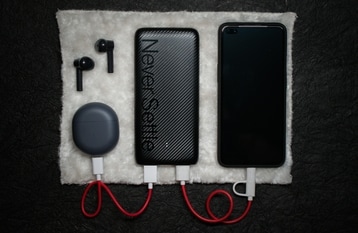Miracle! This NASA spacecraft TOUCHED the Sun and survived! Parker Probe, take a bow | Video
NASA spacecraft called the Parker Probe created history by touching the Sun. Check the tech behind it all.

A few days ago NASA spacecraft, the Parker Probe, made history! The National Aeronautics and Space Administration (NASA)'s Parker Solar Probe touched the Sun. The Parker Probe entered the Sun's upper atmosphere known as the corona where the temperature intensity is up to 2 million-degree Fahrenheit. This is the first time that a spacecraft has reached this close to the Sun. Parker Probe is uncovering scientific breakthroughs that other spacecraft couldn't observe because they were too far away from the Sun and could not go any closer. Parker Probe survived, thanks to the amazing tech that went into it.
But the mystery in this history is, ‘how does the Parker Probe handle this much heat'? It must have taken a lot of engineering to create instruments that could survive the scorching heat and continue to take measurements. So, what was it that prevented Parker Probe turning into ashes and how did it survive? Check out the amazing nature of this NASA mission below.
The survival of NASA Parker Probe
Parker Probe measured particles and magnetic fields three times in the corona on April 28, one of which lasted five hours. At 1,800 degrees, the cup (check description below) glowed red-orange like a fireplace poker, according to Anthony Case, the center's instrument scientist, Mashable India reported. That's the same temperature as volcanic lava. However, it was never able to reach the millions of degrees of its surroundings.
To determine the material of the cup, scientists limited their choices to a small sliver of the periodic table when determining what the cup should be built of. The device is made of high-melting-point materials like tungsten, niobium, molybdenum, and sapphire. For example, tungsten can withstand temperatures of up to 6,192 degrees. The team worked on the cup's design for eight years.
In Parker Probe, thousands of mirrors were utilized to reflect sunlight allowing scientists to test materials under superheated conditions. According to scientists, the cup will not melt if it becomes too hot during the voyage. When exposed to the vacuum of space, the device would vaporize, just as dry ice does when exposed to water.
NASA revealed a 4.5-inch thick heat shield that keeps the spacecraft in shadow at about 85 degrees, protecting other equipment and electronics. The probe's solar panels include a basic cooling system with a higher boiling point than normal.
What is the Solar Probe Cup (SWEAP)
According to NASA, the Solar Wind Electrons Alphas and Protons investigation, or SWEAP, gathers observations using two complementary instruments: the Solar Probe Cup, or SPC, and the Solar Probe Analyzers, or SPAN. The instruments count the most abundant particles in the solar wind — electrons, protons and helium ions — and measure such properties as velocity, density, and temperature to improve our understanding of the solar wind and coronal plasma.
SPC is what's known as a Faraday cup, a metal device that can catch charged particles in a vacuum. Peeking over the heat shield to measure how electrons and ions are moving, the cup is exposed to the full light, heat and energy of the Sun. The cup is composed of a series of highly transparent grids — one of which uses variable high voltages to sort the particles — above several collector plates, which measure the particles' properties. The grids, located near the front of the instrument, can reach temperatures of 3,000 F, glowing red while the instrument makes measurements. The instrument uses pieces of sapphire to electrically isolate different components within the cup. As it passes close to the Sun, SPC takes up to 146 measurements per second to accurately determine the velocity, density and temperature of the Sun's plasma.
Watch the video on NASA's Solar Probe Cup below:
About Parker Solar Probe
Parker Solar Probe was launched in 2018 to investigate the Sun's mysteries. The spacecraft travels at a massive speed of over 500,000kmph, allowing for quick entry and exit to prevent heat damage. So far, the probe has discovered that at least some magnetic zigzags in the wind originate from the sun's surface.
Catch all the Latest Tech News, Mobile News, Laptop News, Gaming news, Wearables News , How To News, also keep up with us on Whatsapp channel,Twitter, Facebook, Google News, and Instagram. For our latest videos, subscribe to our YouTube channel.































